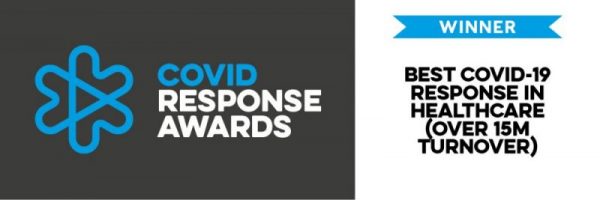Introduction
The Starter Lower Limb Rehabilitation Class aims to help you recover from your lower limb injury or surgery and to show you how to get your joint movement, muscle power, flexibility and balance back. We want to support you to achieve your goals and return to your normal levels of activity. Having looked at the difficulties and / or pain you are experiencing, we are offering you this as the best and quickest way to make a full recovery.
What to expect
This is a physical, progressive exercise rehabilitation group. The group usually consists of up to 12 people, who are at varying stages of recovery for a variety of problems. The therapist will confirm some details with you at the start of the class and provide you with information on what to expect. You will be monitored and guided through the exercises and with time you will become familiar and more confident. We would like you to attend 4 regular sessions and it is important to practice these exercises at home in between sessions and once your treatment has finished.
What will I need?
- Wear loose fitting clothing that is comfortable to move in
- Wear supportive footwear such as trainers
- You may wish to bring a drink
Read our FAQs for more information about our classes and what to expect.
Self-help exercises
Try to find 5-10 minutes in your daily routine to complete some of these exercises, choosing 3-4 different ones each time to practice.
To make progress with your recovery, each exercise should be easy and comfortable at the start but slightly uncomfortable by the end, with the discomfort easing within 10 minutes of finishing.
If it is too hard (very uncomfortable or doesn’t ease off) do less repetitions or the easier version next time. If it is too easy (doesn’t get uncomfortable by the end) do more repetitions or the harder version of the exercise next time. The exercises provided are a guide and not all of them may be appropriate for you. Speak to your therapist for specific guidance on your home program or if you have any concerns with any of the exercises.
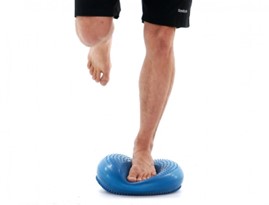
Exercise 1 - Balance
Stand on one foot on a disc and try to maintain your balance.
Hold a stable object if needed.
Exercise 2 : Seated Hamstring Stretch
Sit on the edge of a sturdy chair with one leg straight out in front of you and the other knee bent.
Stick your hips back while keeping your back straight, as you bend forward to feel a stretch behind your straight leg.
Hold the position for the recommended time.
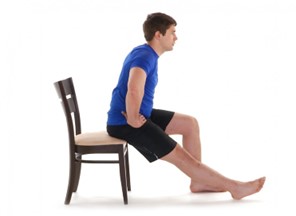
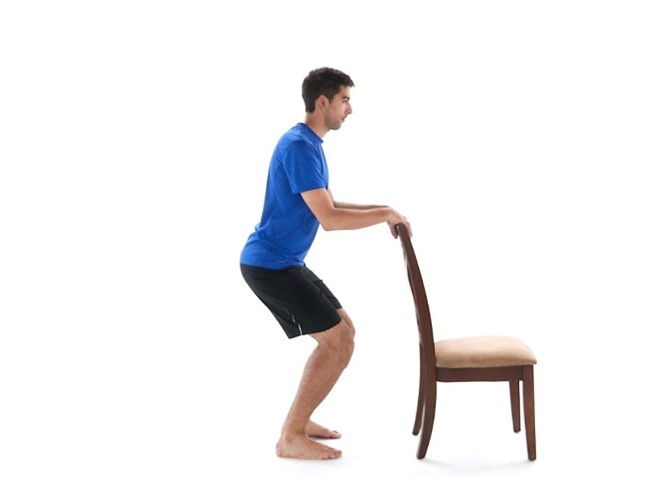
Exercise 3 : Partial Squat
Stand in front of a counter and hold onto the countertop.
While maintaining your back straight and your hips above the level of your knees, slowly lower your body into a semi-squat position without leaning forward and keeping your heels in contact with the ground at all times
Exercise 4 : Inner range Knee extension
Lie down on your back with a foam roller behind your thigh, just above the knee.
Push your thigh down into the roller and lift your heel up off the floor as high as you can without lifting the leg from the roller.
Lower your leg to the starting position and repeat.
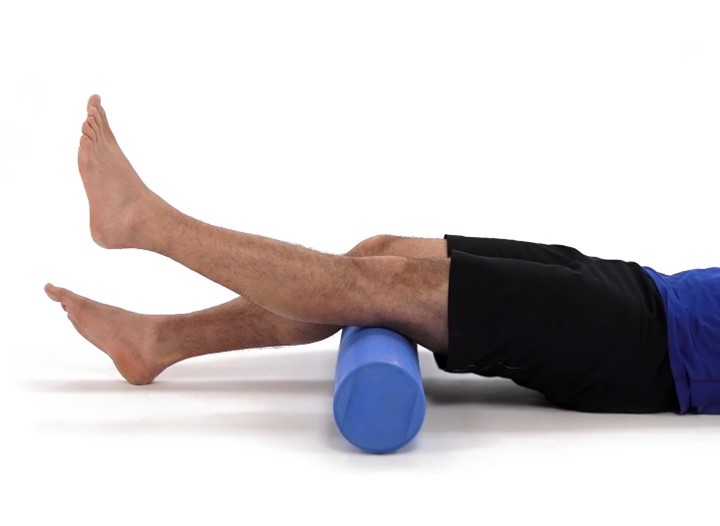
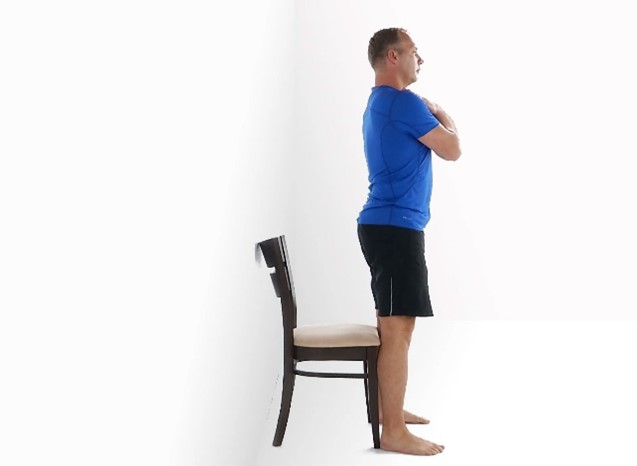
Exercise 5 : Sit To Stand
Sit on a chair that has been placed against a wall to prevent it from moving.
Fold your arms across your chest.
With your feet slightly apart, lean forward, so your shoulders are over your feet and stand up fully.
Slowly return to sitting.
Exercise 6 : Step ups
Stand with the involved leg up on a step and shift your weight over your knee.
Step up slowly, keeping your knee cap in line with your 2nd toe and your pelvis level.
Step back down leading with the uninvolved leg.
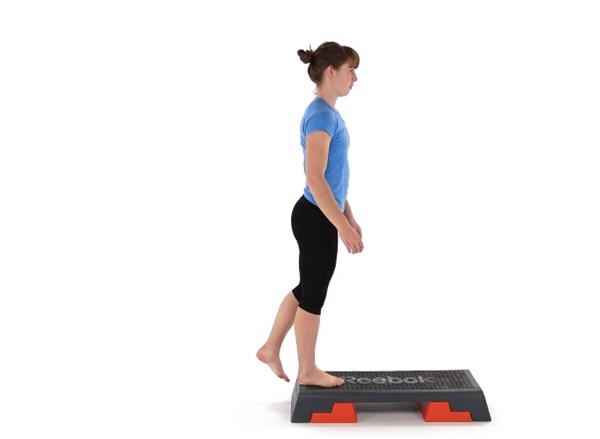
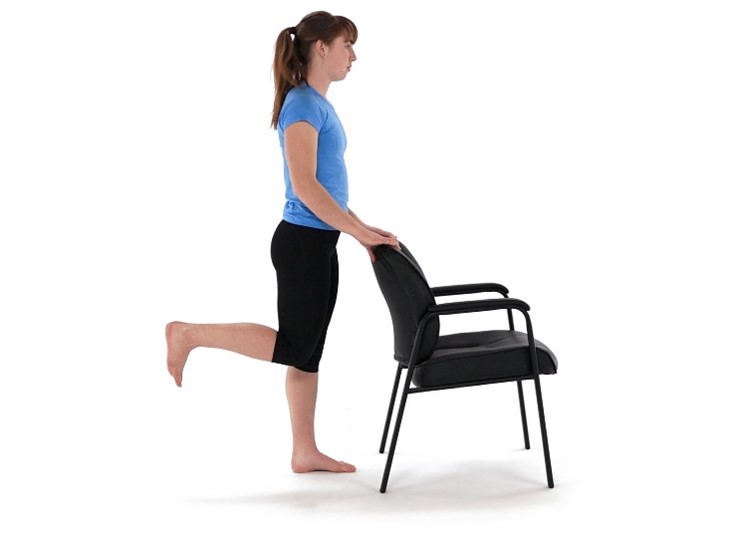
Exercise 7 : Standing Knee flexion
Stand with your back straight and your feet at hips width.
Transfer your weight to your unaffected leg and bend the other knee to bring the foot towards your buttock without arching the lower back or move the knee forward.
Lower your foot slowly and repeat.
Exercise 8: Active Knee Extension
Sit on a chair high enough so your foot is off the floor.
Start with your knee flexed completely (heel as close as you can to the buttocks) and extend completely. Go back to full flexion and repeat.
Keep the trunk straight.
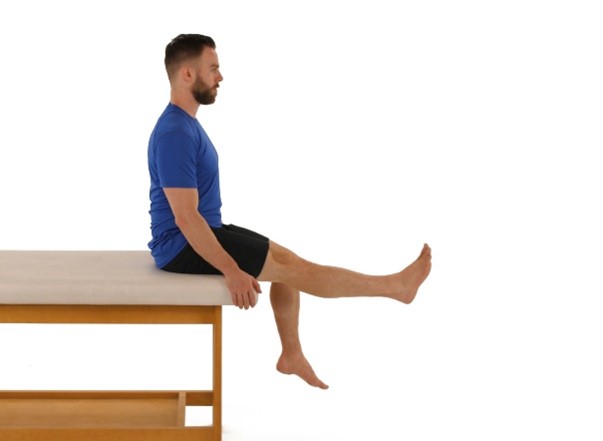
Physical activity reduces the chances of major illness
The importance of being active
NHS guidleines recommend the following:
- 150mins moderate intensity exercise a week
- 30mins x 5 = Weekly recommended activity
- Moderate intensity = any exercise that elevates the heart/ breathing rate to a point where you can still hold a conversation 75mins of intense exercise a week
- 15mins x 5 = Weekly recommended activity
- Intense exercise = any exercise that elevates heart rate
Physical benefits include
- Energy levels increased
- Increased physical strength
- Completing longer walks
- Grants you some more ability to do more things that you may enjoy Decreases chance of developing OA by 83%
Mental benefits include
- Stimulates Release of dopamine and serotonin
- Improving mood
- Reduces Stress
- Improves sleep – Serotonin has been shown to be assistive with sleep regulation
- Better digestion – Lower Serotonin presence in the gut is found to correlate with constipation
- Health is a state of complete physical, mental and social well-being and not merely the absence of disease or infirmity”. WHO
Vita is an award-winning, CQC registered healthcare provider





